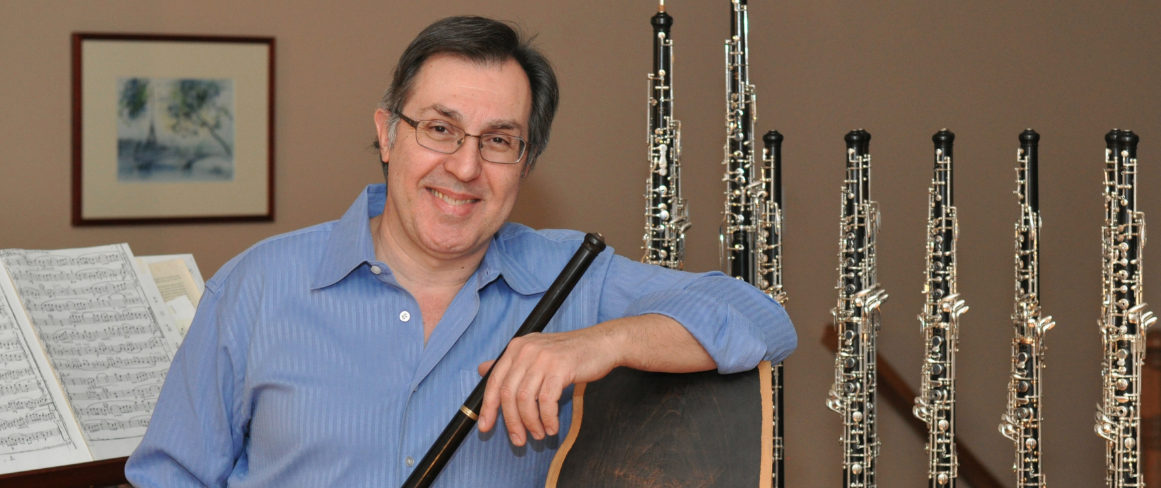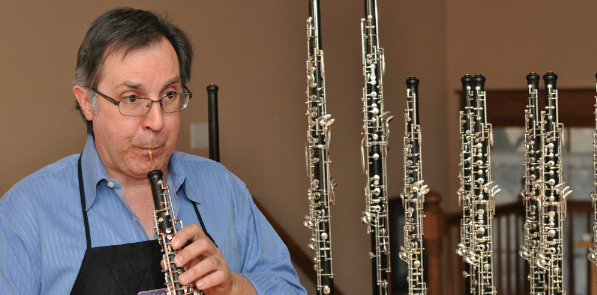Seasonal Oboe Care
You can avoid having to prematurely repair your oboe or English horn.
Take these precautions to avoid cracking and damage as the seasons change.

When the Temperatures Fall, the Danger of Stress Cracks Rises for
Oboists of all Skill Levels
Carlos Coelho, one of the nation’s leading experts in Oboe preservation, restoration and care, cautioned Oboe players across North America to take steps to prevent needless damage to their instruments as the winter months approach.
The occurrence of instrument harm rises significantly during the winter months. It most often manifests itself as hairline cracks between tone holes. Ninety-nine percent of the fractures occur in an Oboe’s upper joint. These are the direct result of moisture imbalance within the wooden body of the instrument when warm, moist breath comes in contact with cold, dry wood.
“Cracks occur due to disparities in moisture absorption between the internal bore and the outer surface of an instrument,” Carlos Coelho said. “The combination of dryer room air, colder wood temperatures and moisture-laden human breath creates a perfect storm of circumstances for oboe damage.”
Coelho noted the act of playing an Oboe during the winter causes excessive moisture buildup. Instruments often become chilled in transport or simply take on the cooler ambient room temperatures associated with the fall and winter seasons. When warm breath flows through a cold Oboe, water droplets form along the bore’s inner surface. Coelho compared it to what happens to a cold pitcher of water on a warm, humid day.
Left unattended, the excess moisture penetrates the wood grain and causes it to swell slightly. The difference between the distended, moisture-laden wood near the bore hole and that near the surface causes stress to the instrument’s body. Cracks can often appear between trill tone holes and follow the grain of the wood, which travels lengthwise through an Oboe’s body.
Keys to Cold Weather use and Care of Your Oboe or English Horn
Coelho suggests oboists follow four simple steps to keep their instruments in good working order during the colder months:
Get a handle on cold weather warm-up techniques:
Before playing a single note, gently warm the Oboe by holding it in your hands, against your body or placing it under your arms for a few minutes. This will allow the body of the Oboe to gradually warm and will reduce the potential temperature disparity between the interior surface of the bore and the surface of the Oboe.
Perform a “so low”
As you begin playing the instrument, start by playing notes at the lower end of the scale for a few minutes and then work your way up to the higher notes. Lower notes that employ the tone holes in the bottom joint of the Oboe allow more air to travel the entire length of the instrument, enabling the temperature of the upper joint, the lower joint and the bell to adjust in the most uniform fashion.
Become absorbed
Periodically use an absorbent silk swab to remove moisture buildup from the lining of the bore. Never let your instrument sit for an extended period without swabbing moisture away.
Applying a natural oil to the interior surfaces of the instrument will help reduce moisture absorption and allow droplets of moisture to travel through the instrument, instead of lingering in its interior. Make sure to oil the inside apertures of the tone holes as well, to keep moisture from migrating along the wood grain from one tone hole to another – a leading cause of swelling and cracking damage.

Remarkably Better Oboes
for Sale and Upon Repair.

By Phone: (214) 383-9734
Contact Carlos
to speak with someone who truly knows a Lorée Oboe – for guidance, advice, and more information.
By Email
[email protected]



